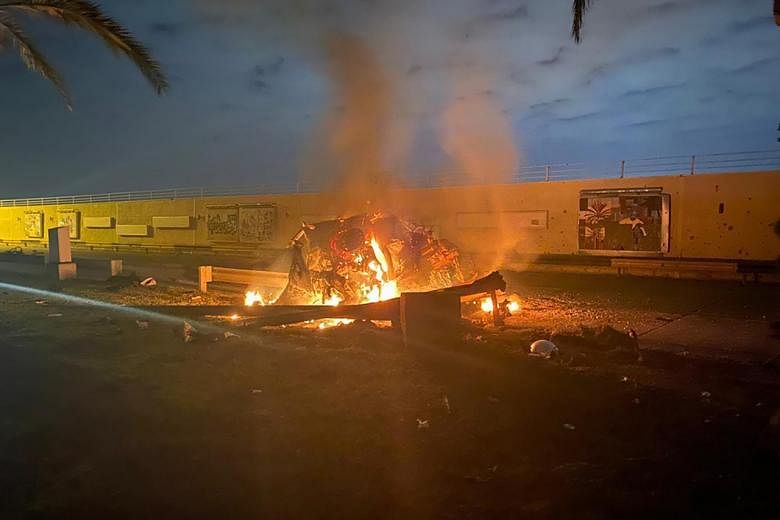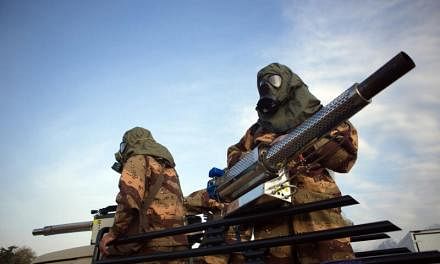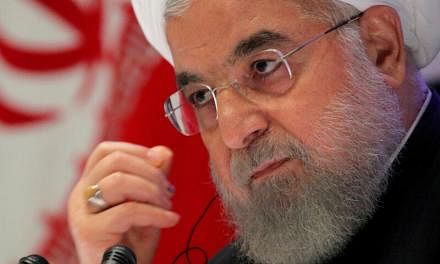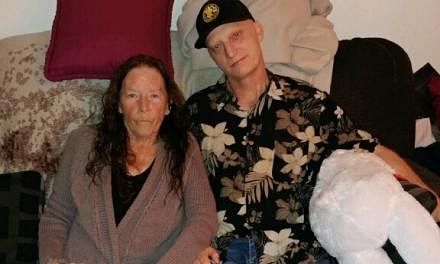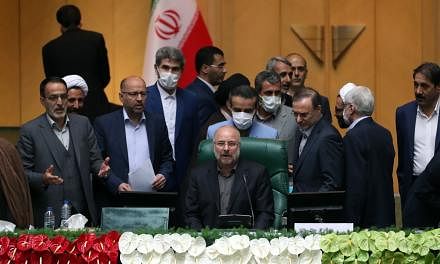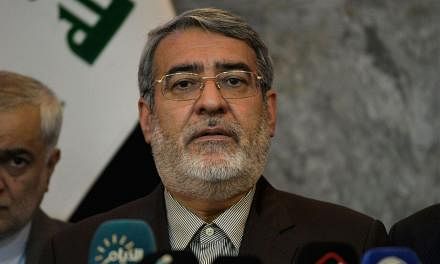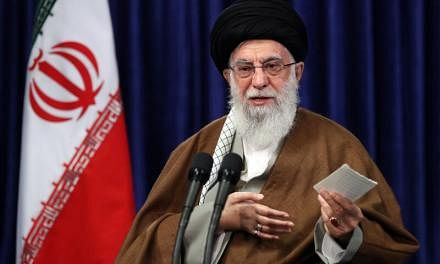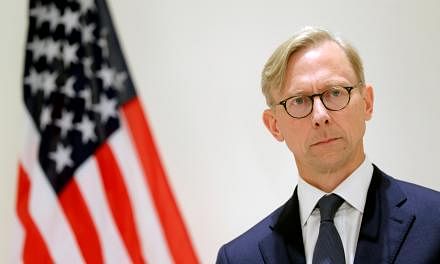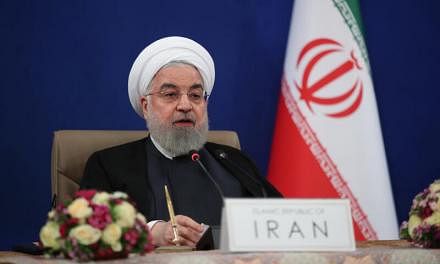WASHINGTON (NYTIMES) - The plane was late and the kill team was worried. International listings showed that Cham Wings Airlines Flight 6Q501, scheduled to take off from Damascus, Syria, at 7.30pm for Baghdad, had departed; but in fact, an informant at the airport reported, it was still on the ground, and the targeted passenger had not yet shown up.
The hours ticked by, and some involved in the operation wondered if it should be called off. Then, just before the plane door closed, a convoy of cars pulled up on the tarmac carrying General Qassem Soleimani, Iran's security mastermind, who climbed on board along with two escorts. Flight 6Q501 lifted off, three hours late, bound for the Iraqi capital.
The plane landed at Baghdad International Airport just after midnight, at 12.36am, and the first to disembark were Soleimani and his entourage. Waiting at the bottom of the gangway was Abu Mahdi al-Muhandis, an Iraqi official in charge of militias and close to Iran. Two cars carrying the group headed into the night - shadowed by American MQ-9 Reaper drones. At 12.47, the first of several missiles smashed into the vehicles, engulfing them in flames and leaving 10 charred bodies inside.
The operation that took out Soleimani, commander of the Quds Force of Iran's Revolutionary Guard, propelled the United States to the precipice of war with Iran and plunged the world into seven days of roiling uncertainty.
The story of those seven days, and the secret planning in the months preceding them, ranks as the most perilous chapter so far in President Donald Trump's three years in office: his decision to launch an audacious strike on Iran, and his attempt through allies and a back channel to keep the ensuing crisis from mushrooming out of control.
The president's decision to ratchet up decades of simmering conflict with Iran set off an extraordinary worldwide drama, much of which played out behind the scenes. In capitals from Europe to the Middle East, leaders and diplomats sought to head off a full-fledged new war, while at the White House and Pentagon, the president and his advisers ordered more troops to the region.
Saudi Arabia's de facto ruler was so alarmed, he dispatched his brother to Washington for a clandestine meeting with Trump. European leaders, incensed at being kept in the dark, scrambled to keep Iran from escalating. If it did, Americans developed plans to strike a command-and-control ship and conduct a cyberattack to partly disable Iran's oil and gas sector.
But the United States also sent secret messages through Swiss intermediaries urging Iran not to respond so forcefully that Trump would feel compelled to go even further. After Iran did respond - firing 16 missiles at bases housing US troops without hurting anyone, as a relatively harmless show of force - a message came back through the Swiss saying that would be the end of its reprisal for now. The message, forwarded to Washington within five minutes after it was received, persuaded the president to stand down.
When the week ended without the war many feared, Trump boasted that he had taken out a US enemy. But the struggle between two nations is not really over. Iran may find other ways to take revenge. Iraqi leaders may expel US forces, accomplishing in death what Soleimani tried and failed to do in life. And in the confusion, a Ukrainian civilian passenger jet was destroyed by an Iranian missile, killing 176 people.
The episode briefly gave Trump's allies something to cheer, distracting from the coming Senate impeachment trial, but now Trump faces questions even among Republicans about the shifting justifications for the strike that he and his national security team have offered. Secretary of State Mike Pompeo initially cited the need to forestall an "imminent" attack, and the president has amplified that to say four US embassies were targeted.
But administration officials said they did not actually know when or where such an attack might occur, and one State Department official said it was "a mistake" to use the word "imminent." And some were stunned that Trump picked what they considered a radical option with unforeseen consequences.
This account - based on interviews with dozens of Trump administration officials, military officers, diplomats, intelligence analysts and others in the United States, Europe and the Middle East - offers new details about what may be the most consequential seven days of the Trump presidency.
IF PROTESTERS ENTER THE COMPOUND, KILL THEM
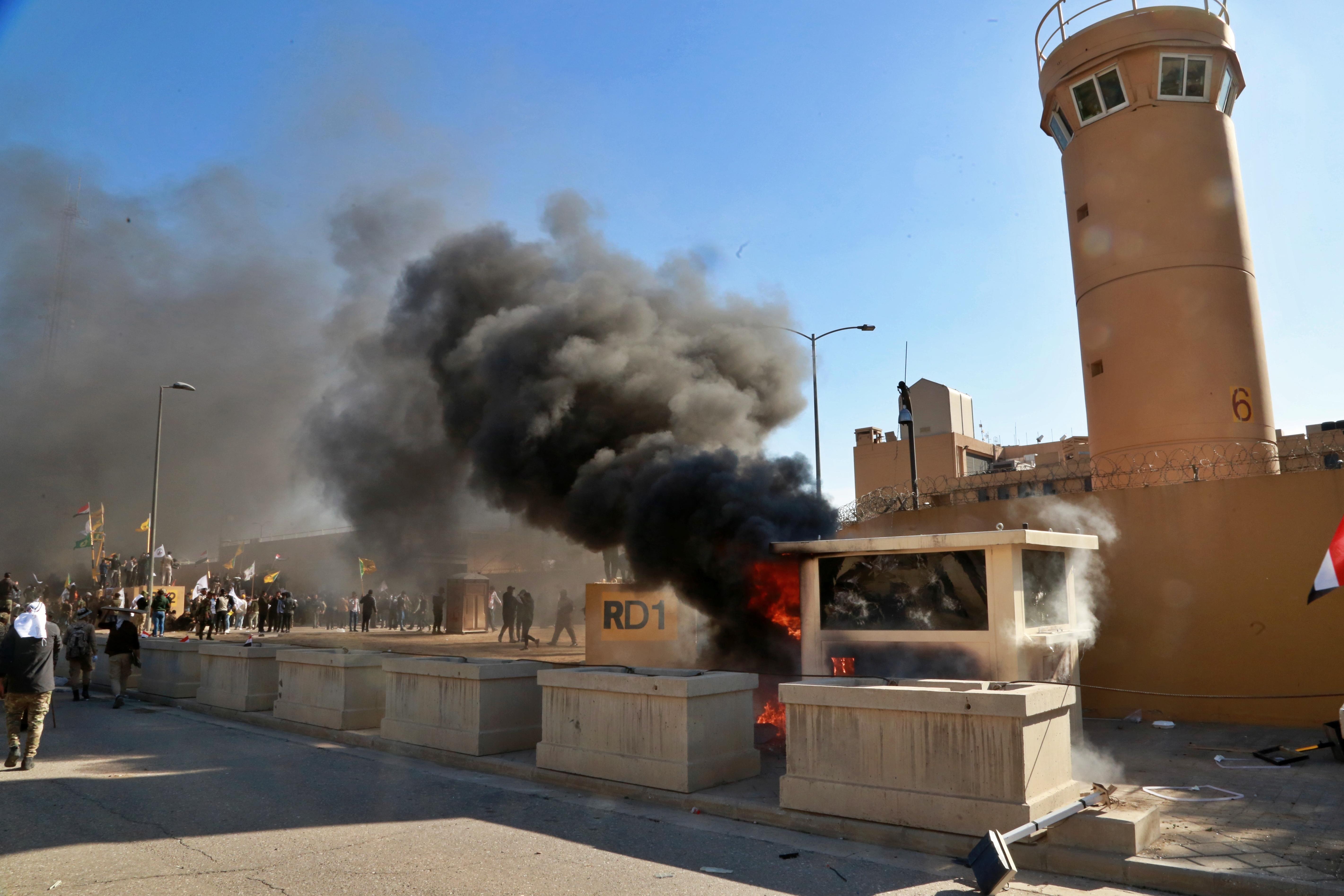
The confrontation may have actually begun by accident. For years, Iran has sponsored proxy forces in Iraq, competing for influence with US troops who first arrived in the invasion of 2003. Starting last fall, Iranian-backed militias launched rockets at Iraqi bases that house US troops, shattering nerves more than doing much damage.
So when rockets smashed into the K1 military base near Kirkuk on Dec 27, killing an American civilian contractor, Nawres Waleed Hamid, and injuring several others, the only surprise was the casualties. Hizbollah, the Iranian-backed militia group held responsible, had fired at least five other rocket attacks on bases with Americans in the previous month without deadly results.
US intelligence officials monitoring communications between Hizbollah and Soleimani's Guard learned that the Iranians wanted to keep the pressure on the Americans but had not intended to escalate the low-level conflict. The rockets landed in a place and at a time when US and Iraqi personnel normally were not there, and it was only by unlucky chance that Hamid was killed, US officials said.
But that did not matter to Trump and his team. An American was dead, and the president who had called off a retaliatory strike with 10 minutes to go in June and otherwise refrained from military action in response to Iranian provocations now faced a choice.
Advisers told him Iran had probably misinterpreted his previous reluctance to use force as a sign of weakness. To reestablish deterrence, he should authorise a tough response. On holiday at Mar-a-Lago, his Florida resort, the president agreed to strikes on five sites in Iraq and Syria two days later, killing at least 25 members of Kataib Hizbollah and injuring at least 50 more.
Two days later, on Dec 31, pro-Iranian protesters backed by many members of the same militia responded by breaking into the US Embassy compound in Baghdad and setting fires. Worried about repeats of the 1979 embassy takeover in Iran or the 2012 attack on a diplomatic post in Benghazi, Libya, Trump and his team ordered more than 100 Marines to rush to Baghdad from Kuwait.
The Marines received little information about their mission or what was happening on the ground as they loaded their magazines with ammunition. All they knew was, they were being sent to secure the embassy with one clear order: If protesters entered the compound, kill them.
Some of the Marines made dry jokes about the movie "Rules of Engagement," starring Samuel L. Jackson as a commander whose unit fires on a crowd of embassy protesters, stirring an international episode and a court-martial. But when the Marines reached Baghdad, none had to open fire. They used nonlethal weapons like tear gas to disperse protesters, and the siege ended without bloodshed.
Still, watching television in Florida, Trump grew agitated by the chaos and ready to authorise a more robust response. And Dec 31, even as protests were beginning, a top secret memo began circulating, signed by Robert O'Brien, his national security adviser, listing potential targets, including an Iranian energy facility and a command-and-control ship used by the Guard to direct small boats that harass oil tankers in the waters around Iran. The ship had been an irritant to Americans for months, especially after a series of covert attacks on oil tankers.
The memo also listed a more provocative option: targeting specific Iranian officials for death by military strike. Among the targets mentioned, according to officials who saw it, was Abdul Reza Shahlai, an Iranian commander in Yemen who helped finance armed groups across the region.
Another name on the list: Soleimani.
EXERTING POWER, PRAYING FOR A MARTYR'S DEATH
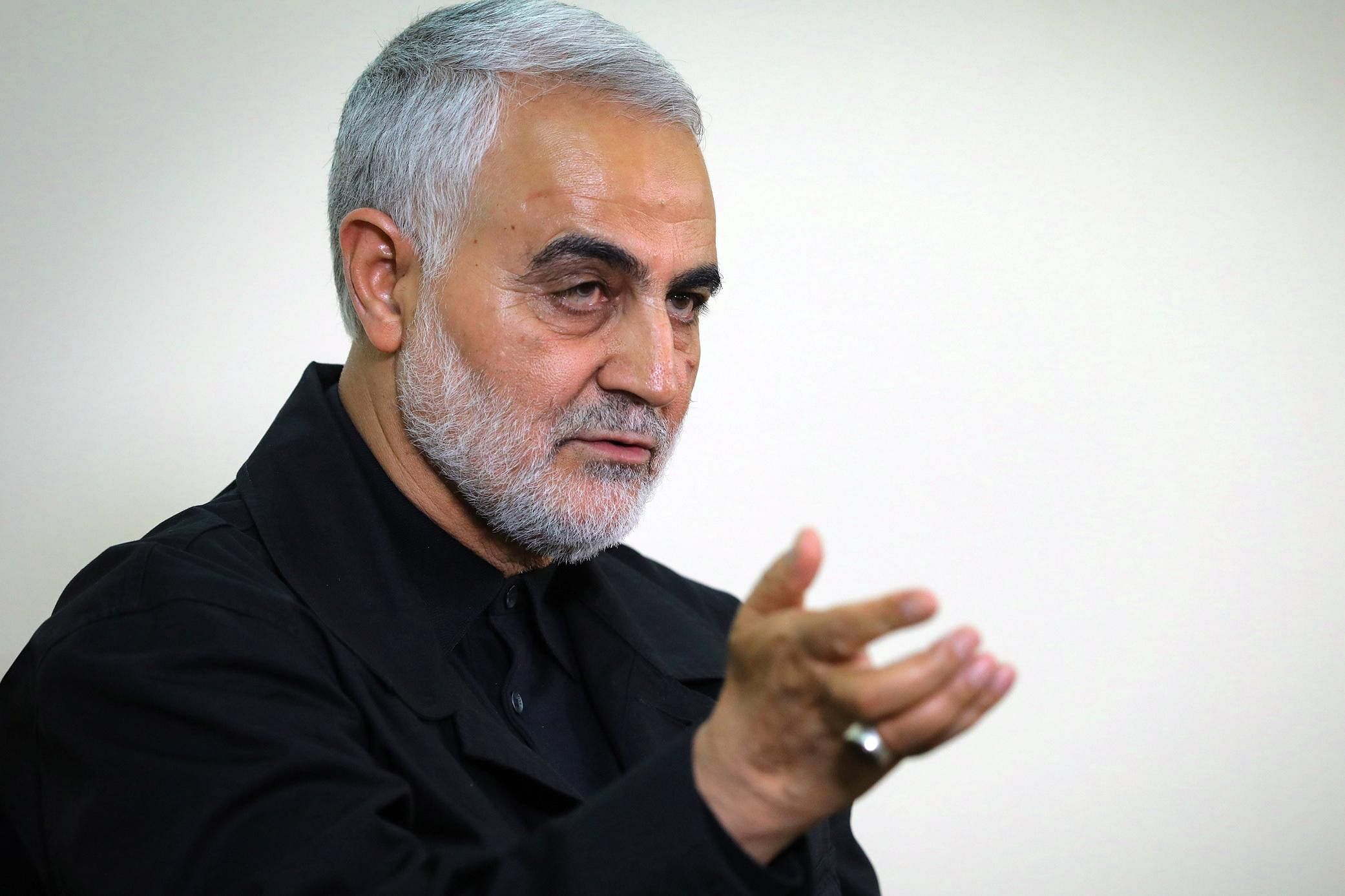
Soleimani was hardly a household name in the United States, but as far as US officials were concerned, he was responsible for more instability and death in the Middle East than almost anyone.
As head of the elite Quds Force, Soleimani was effectively the second most powerful man in Iran and had a hand in managing proxy wars in Iraq, Syria, Lebanon and Yemen, including a campaign of roadside bombs and other attacks that killed an estimated 600 US troops during the height of the Iraq War.
At 62, with a narrow face, gray hair and a close-cropped beard, Soleimani was known for travelling without body armor or personal protection, collaborating with some of the most ruthless figures in the region while sharing meals with the fighters and telling them to take care of their mothers, according to a Hezbollah field commander who met him in Syria.
After decades of working in the shadows, Soleimani had emerged in recent years following the Arab Spring and war with the Islamic State as the public figure most associated with Iran's goal of achieving regional dominance. Photographs surfaced showing him visiting the front lines in Iraq or Syria, and meeting with Iran's supreme leader in Teheran and sitting down with Hezbollah leader Hassan Nasrallah in Lebanon. When President Bashar Assad of Syria visited Teheran last year, it was Soleimani who welcomed him.
By the end of 2019, Soleimani could boast of a number of Iranian accomplishments: Assad, a longtime Iranian ally, was safely in power in Damascus, Syria's capital, prevailing in a bloody, multifront, years-long civil war; and the Quds Force had a permanent presence on Israel's frontier. A number of militias Soleimani had helped foster were receiving salaries from the Iraqi government and exerting power in Iraq's political system. And the Islamic State had been defeated in Syria and Iraq - thanks, in part, to ground forces he had overseen, one area where he and the United States shared interests.
For the past 18 months, officials said, there had been discussions about whether to target Soleimani. Figuring that it would be too difficult to hit him in Iran, officials contemplated going after him during one of his frequent visits to Syria or Iraq and focused on developing agents in seven different entities to report on his movements - the Syrian Army, the Quds Force in Damascus, Hizbollah in Damascus, the Damascus and Baghdad airports, and the Hizbollah and Popular Mobilisation forces in Iraq.
By the time tensions with Iran spiked in May with attacks on four oil tankers, John Bolton, then the president's national security adviser, asked the military and intelligence agencies to produce new options to deter Iranian aggression. Among those presented to Bolton was killing Soleimani and other leaders of the Guard. At that point, work to track Soleimani's travels grew more intense.
By September, the US Central Command and Joint Special Operations Command were brought into the process to plan a possible operation. Various alternatives were discussed - some in Syria, some in Iraq. Syria seemed more complicated, both because the US military had less freedom of movement there and because Soleimani spent most of his time with Hizbollah officers and officials did not want to bring them into the mix and risk a new war with Israel.
Agents recruited in Syria and Iraq reported from time to time on Soleimani's movements, according to an official involved. Surveillance revealed that he flew on a number of airlines and sometimes tickets for a trip were bought on more than one to throw off pursuers. He would be delivered to his plane at the last possible moment, then sit in the front row of business class so he could get off first and depart quickly.
Soleimani set off on his last trip on New Year's Day, flying to Damascus and then heading by car to Lebanon to meet with Nasrallah, the Hezbollah leader, before returning to Damascus that evening. During their meeting, Nasrallah said in a later speech, he warned Soleimani that the US news media was focusing on him and publishing his photograph.
"This was media and political preparation for his assassination," Nasrallah said.
But as he recalled, Soleimani laughed and said that, in fact, he hoped to die a martyr and asked Nasrallah to pray that he would.
AT SPY HEADQUARTERS, SEEING A 'MOSAIC EFFECT'
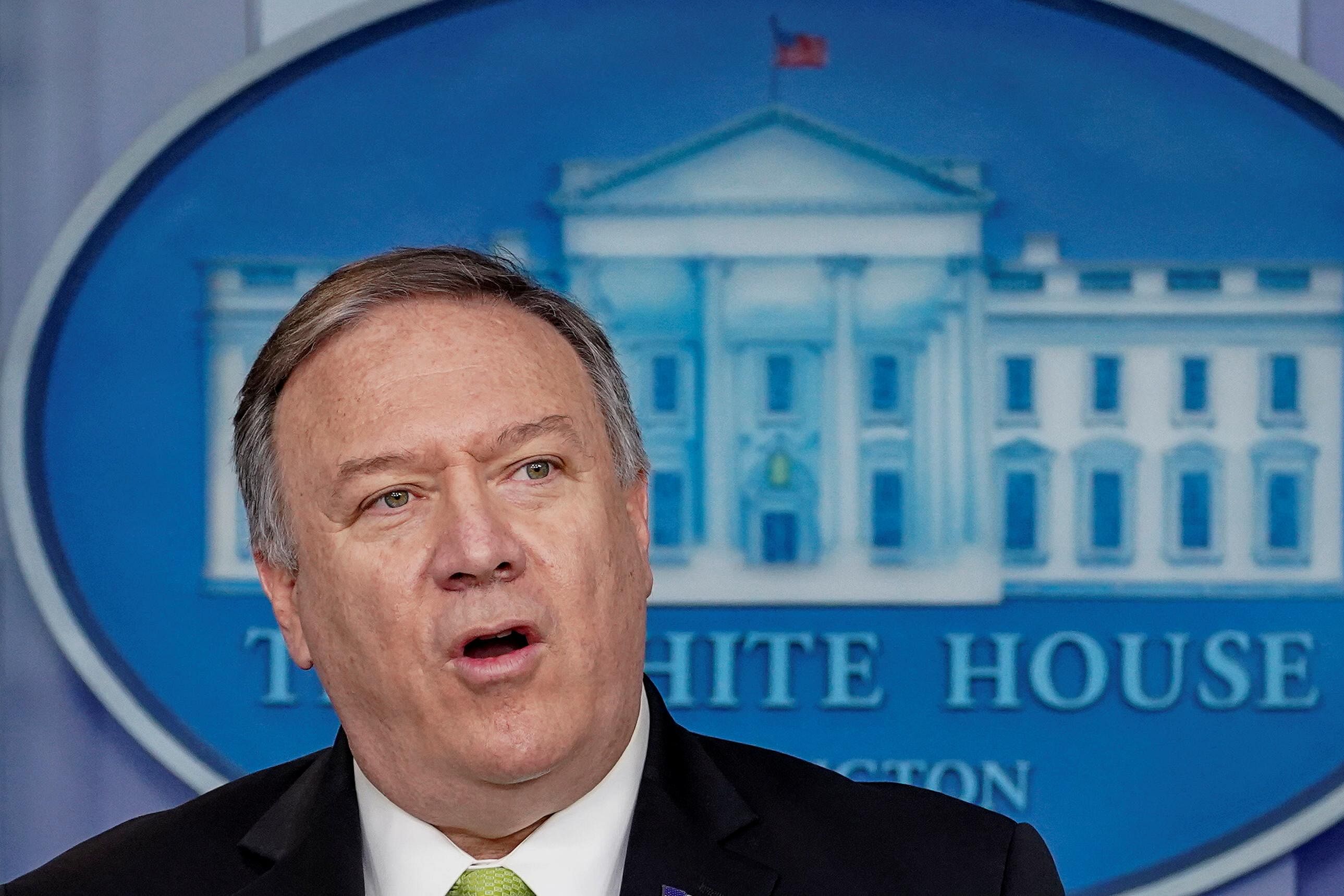
That same day, at CIA headquarters in Langley, Virginia, Gina Haspel was working to fulfil that prayer.
Haspel, the director, was shown intelligence indicating that Soleimani was preparing to move from Syria to Iraq. Officials told her there was additional intelligence that he was working on a large-scale attack intended to drive US forces out of the Middle East.
There was no single definitive piece of intelligence. Instead, officials said, CIA officers spoke of the "mosaic effect," multiple scraps of information that came together indicating that Soleimani was organising proxy forces around the region, including in Lebanon, Yemen and Iraq, to attack US embassies and bases. Several officials said they did not have enough concrete information to describe such a threat as "imminent," despite Pompeo's assertion, but they did see a worrying pattern.
While Pompeo also claimed later that such an attack could kill "hundreds," other officials said they had no specific intelligence suggesting that. Most US facilities in the region have been heavily fortified for years, and such an immense death toll would be unlikely; at no point in the last two decades, even during the worst of the Iraq War, have any hostile forces been able to pull off such a deadly assault on Americans at once.
Nonetheless, Haspel was convinced there was evidence of a coming attack and argued the consequences of not striking Soleimani were more dangerous than waiting, officials said. While others worried about reprisals, she reassured colleagues that Iran's response would be measured. Indeed, she predicted the most likely response would be an ineffectual missile strike from Iran on Iraqi bases where US troops were stationed.
"If past is prologue, we have learned that when we enforce a red line with Iran, when Iran gets rapped on the knuckles, they tactically retreat," said Dan Hoffman, a former CIA officer who served in Iraq. "The retreat might be ephemeral before Iran probes its enemies with more gradually escalating attacks, but we've seen it repeatedly."
There was little dissent about killing Soleimani among Trump's senior advisers, but some Pentagon officials were shocked that the president picked what they considered the most extreme option, and some intelligence officials worried that the possible long-term ramifications were not adequately considered, particularly if action on Iraqi soil prompted Iraq to expel U.S. forces.
"The whole thing seems haphazard to me," said Marc Polymeropoulos, a former senior CIA official who retired last year.
IN THE MIDDLE EAST, 'A STATE OF MOBILISATION'
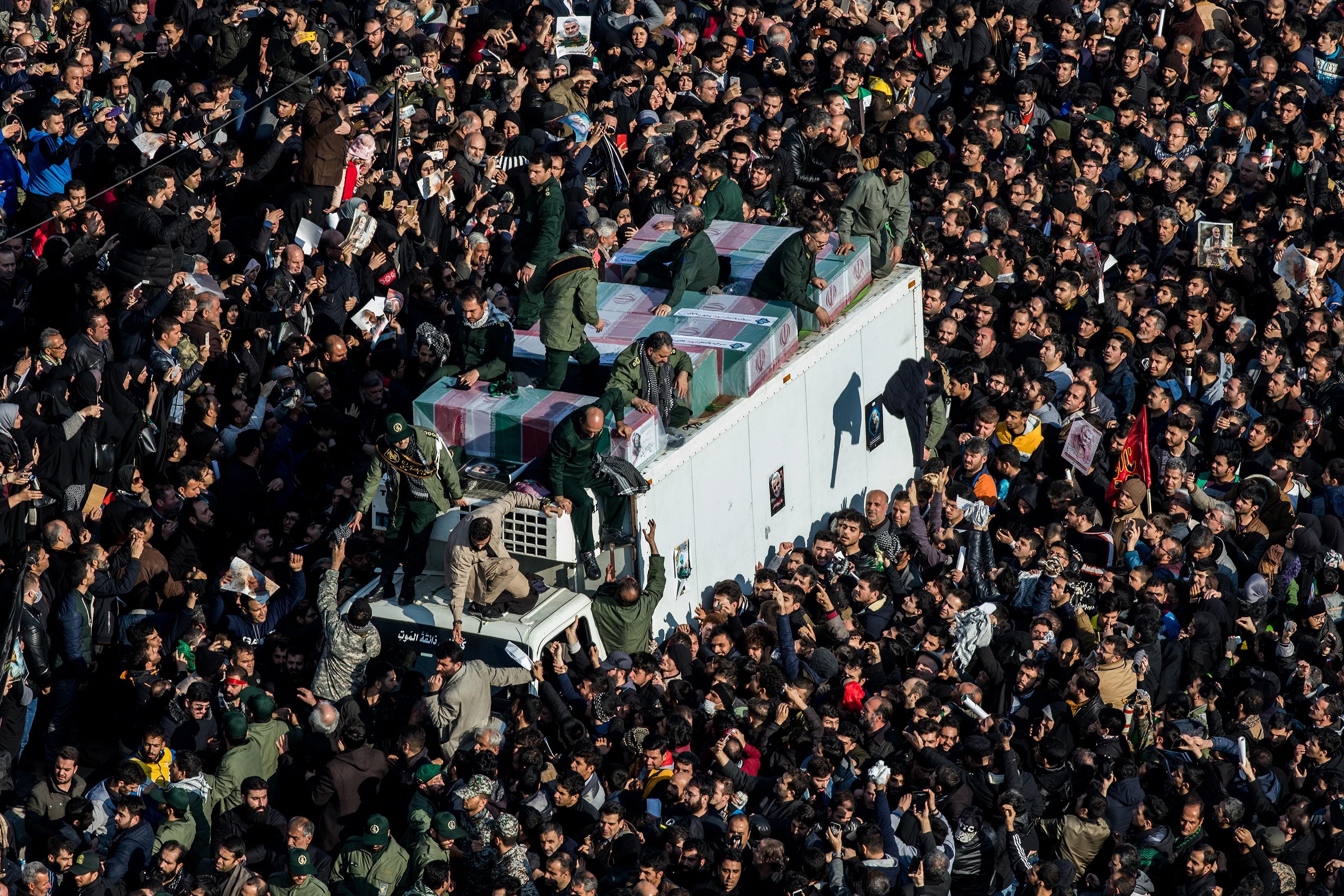
The Trump administration has said that Soleimani was going to Baghdad as part of the attack plot, but there are different theories about the purpose of his visit.
Soleimani had long played a role as power broker in Iraqi politics, and two Iraqi politicians with links to Iran said he was coming to Baghdad to help break an impasse over replacing the prime minister after the collapse of the government in November in the face of anti-Iran protests.
But Prime Minister Adel Abdul Mahdi, still serving as a caretaker until a new government is formed, told Parliament after the drone strike that Soleimani had another goal: to bring an Iranian response to a Saudi offer to reduce tensions. The shadow conflict between Iran and Saudi Arabia had been heating up. After Iranian forces were blamed for an attack on two Saudi oil facilities in September and Trump opted against a military response, Saudi officials worried that they were vulnerable and opened a back channel.
In his speech to Parliament, Abdul Mahdi said he had planned to meet with Soleimani a few hours after his arrival in Baghdad. "It was expected that he was carrying a message for me from the Iranian side responding to the Saudi message that we had sent to the Iranian side to reach agreements and breakthroughs," Abdul Mahdi said.
A Saudi official said he was unaware of any message carried by Soleimani, and some analysts doubted Abdul Mahdi's account. "That is laughable," said Mohammed Alyahya, editor-in-chief of Al Arabiya English, a Saudi news site. "Suddenly, this man is a diplomat extraordinaire one day before he died?"
Another theory, advanced by an intelligence official involved in the operation, held that Soleimani was visiting Iraq to quash anti-Iranian protests by having his Shi'ite militia break them up by force. He hoped to install a new anti-US government that might even throw out US forces.
Whatever goals Soleimani may have had, they died with him in the mangled wreckage at Baghdad's airport. Altogether, 10 people were killed - Soleimani, al-Muhandis and their aides. Al-Muhandis had helped found Hizbollah, the militia held responsible for the Dec 27 rocket attack that killed the American contractor.
But another Iranian commander escaped. The same night Soleimani died, US forces tried to kill Shahlai, the Quds Force commander in Yemen mentioned in O'Brien's memo. Still, the attack failed because of an undisclosed problem with the intelligence.
Iran braced for more. "There was a state of mobilisation to get ready in case that was the first stage in a wider plan," said Mohammed Obeid, a Lebanese political activist with ties to Iran's "resistance axis" in the region. "There could have been other steps that the Americans or the Israelis would take, broadening the circle of confrontation."
'WE KNOW THAT OUR REGION IS STORMY'
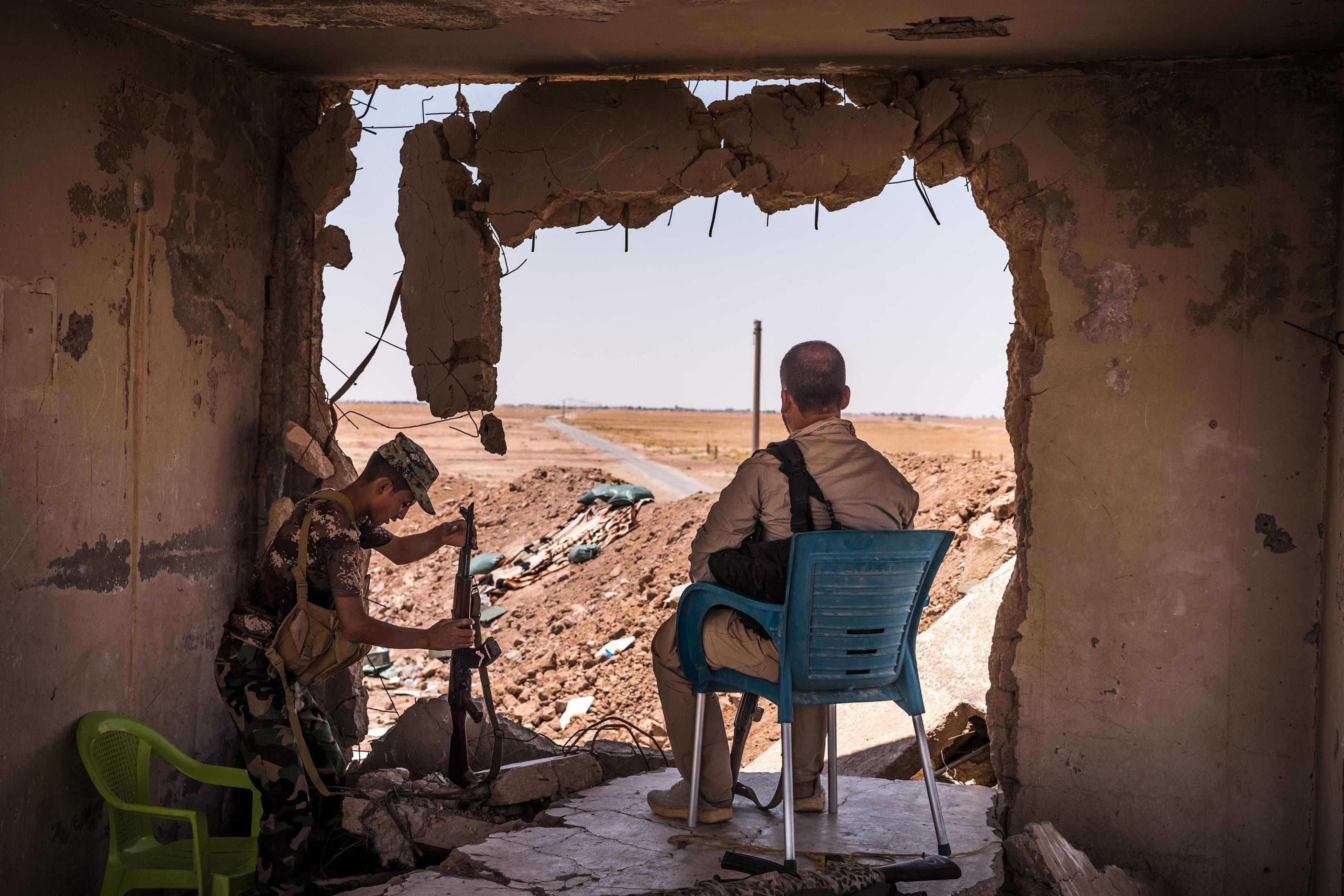
Trump planned to play golf the next morning, Jan. 4, but advisers concluded it would send the wrong message as Soleimani's death stirred unrest around the Middle East and raised the prospect of a wider conflict with Iran.
The president was initially upbeat, expecting the operation to be greeted with applause much like the raid in October that killed Abu Bakr al-Baghdadi, leader of the Islamic State. Indeed, Trump opened his first statement to reporters on the mission that Friday by describing Soleimani as the "No. 1 terrorist anywhere in the world," much as he had opened his statement a couple of months ago calling al-Baghdadi the "world's No. 1 terrorist leader."
But as the president watched television over the weekend, he grew angry that critics were accusing him of reckless escalation. He sought validation from guests at his Florida clubs, recounting details of the Baghdad Embassy protests and drinking in their praise for his decisiveness. He told some associates that he wanted to preserve the support of Republican hawks in the Senate in the coming impeachment trial, naming Republican Senator Tom Cotton of Arkansas, as an example, even though they had not spoken about Iran since before Christmas.
While Trump tipped off another hawk - Republican Senator Lindsey Graham of South Carolina, who was visiting in Florida - his administration gave no advance warning to its European allies or Persian Gulf partners in advance of the strike. The only foreign leader who appeared in the know was Prime Minister Benjamin Netanyahu of Israel, who had spoken with Pompeo before the attack and later offered a cryptic public hint hours before it took place.
"We know that our region is stormy; very, very dramatic things are happening in it," Netanyahu told reporters, unprompted, on the tarmac in Tel Aviv before departing for a visit to Athens, Greece. He went on to offer support for the United States "and to its full right to defend itself and its citizens." Israeli leaders were later pleased by the death of Soleimani, one of their deadliest enemies, but remained silent lest they provoke retaliation, even as shelter supplies were checked and a ski resort near the Syrian frontier was briefly closed.
Yet some figured that if Hizbollah were to attack Israel on Iran's behalf, it might be better to have that battle now. "This camp believes that there will be such a clash anyway, and the best timing is before the US elections - and that Israel may lose this president in the White House," said Ofer Zalzberg, an analyst at the International Crisis Group.
In Riyadh, Saudi Arabia, the crown prince, Mohammed bin Salman, was unsettled. Despite his hawkish approach to Iran, he has been recently accepting offers from Pakistanis, Omanis, Iraqis and others to mediate. Now he immediately dispatched his younger brother, Prince Khalid bin Salman, the deputy defence minister, on an emergency mission to the White House.
The Saudi view was, "Hitting Soleimani is great, but what is the plan?" said Sir John Jenkins, a former British ambassador to Riyadh. "If there is a plan, we are down with it. If not, we all have to de-escalate." Khalid was pleased by whatever Trump told him, telling diplomats afterwards that the royal family was glad the president had dealt Iran a serious blow - and relieved that he did not seem inclined to escalate further.
'A NEW STAGE IN THE TRANS-ATLANTIC DIVORCE'
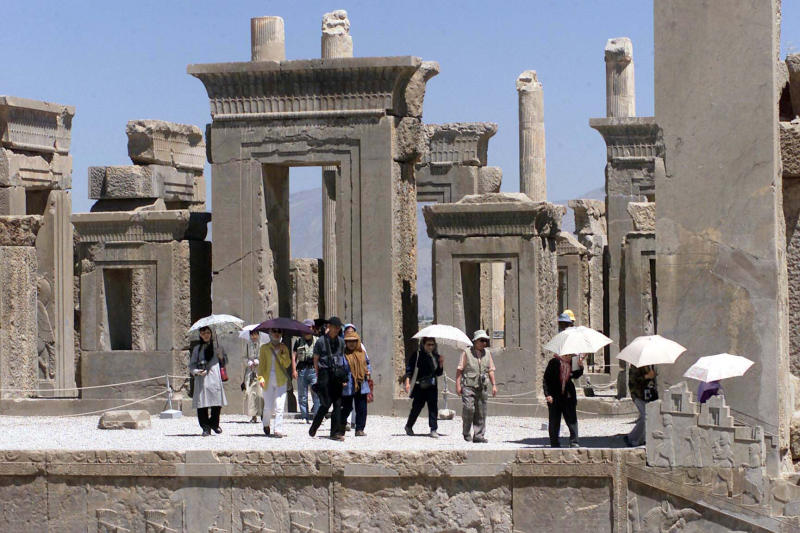
But many were not sure. Trump issued bellicose threats to destroy Iran if it retaliated, including cultural treasures - in violation of international law - touching off international outrage and forcing his own defence secretary to publicly disavow the threat, saying it would be a war crime.
Trump was largely alone on the world stage. No major European power, not even Britain, voiced support for the drone strike, even as leaders agreed that Soleimani had blood on his hands. As Le Monde, the French newspaper, put it, the rift signalled "a new stage in the trans-Atlantic divorce over the Middle East." Trump's withdrawal from the 2015 nuclear accord with Iran has been a major point of contention. European leaders deeply resented the unilateral pullout, seeing that as a grave error that started a cycle of sanctions and recriminations that led to the seven-day showdown and now the restart of the Iranian nuclear program.
When Pompeo phoned his European counterparts after the strike, they expressed concern.
In a 15-minute call, Foreign Minister Heiko Maas of Germany said the killing had not made it any easier to stabilise the region. Pompeo responded that the situation was now more stable.
The French and Japanese both offered to serve as mediators, but that only annoyed Trump, who dislikes middlemen. So the Europeans focused on keeping Iran from overreacting.
A senior German diplomat sent a text message to his Iranian counterpart urging calm. He got back a terse, though polite, message. In a series of phone calls, European officials tried to give the Iranians a sense that it was not them against the rest of the world but that in fact there was a global public beyond the United States, according to one European diplomat.
President Emmanuel Macron of France played an active role, reaching out to both sides. "Macron's specificity is that he does not approve, but he also does not condemn," said Michel Duclos, a former French ambassador to Syria.
Macron reached Trump on Sunday and emphasised the need for de-escalation. Trump suggested he was still open to diplomacy. All the Iranians had to do was come to him, and they could make a deal, Trump said, according to a senior French official.
Two days later, Macron spoke with President Hassan Rouhani of Iran and reminded him that he had "missed a chance in September" to talk directly with Trump in a phone call Macron tried to arrange on the sidelines of the annual United Nations session.
Chancellor Angela Merkel of Germany spoke with Trump, too, and expressed concern for Iraq's stability if allied troops withdrew. If the United States stayed, she said, Germany would also. Trump joked that Germany was welcome to lead the international force and replace the Americans. Merkel laughed.
'THE BALL IS IN OUR COURT,' THE DEFENCE SECRETARY SAYS
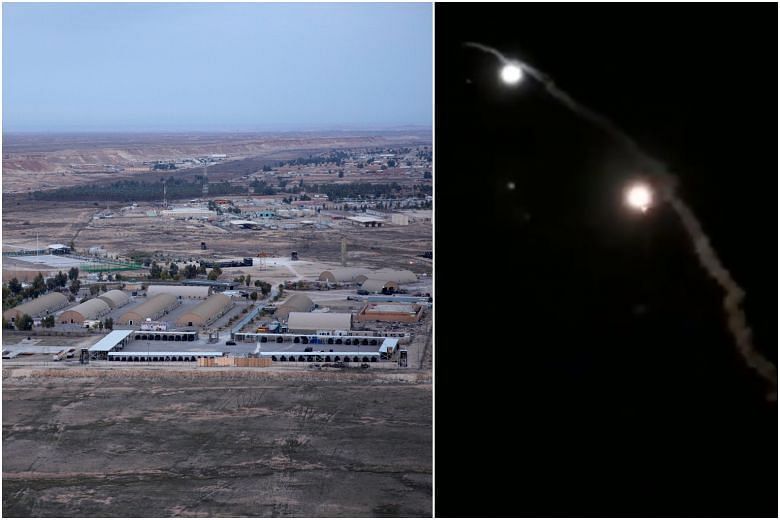
The most important European country in these seven days, it turned out, was Switzerland, which has served as the intermediary between the United States and Iran since they broke off diplomatic relations in 1980.
Hours after the strike, Markus Leitner, the Swiss ambassador in Teheran, headed to the Iranian Foreign Ministry for the first of two visits that day, according to a Swiss analyst. The Americans had sent a letter to the Iranians through the Swiss warning against any retaliation for the drone strike that would incite further military action by Trump.
The Americans "said that if you want to get revenge, get revenge in proportion to what we did," Rear Adm. Ali Fadavi, deputy commander of the Guard, told Iranian state television.
US officials disputed that characterisation, and analysts doubted it was that explicit, although that could be how Iran interpreted it. In any case, Leitner went back to the Foreign Ministry at day's end for the Iranian response.
Unbeknown to the Iranians, Trump had agreed to targeting the other sites originally considered - the oil and gas facility and the command-in-control ship - as part of any further retaliation that might be necessary if Iran responded to the drone strike. Despite Trump's threat, none of the targets on the list were actually cultural, an official said; that was just presidential bluster, aggravated by an instinct to double down in the face of criticism.
On Tuesday, the Defence Special Missile and Astronautics Centre, part of the National Security Agency, pulled together multiple strands of information, including overhead imagery and communication intercepts, to conclude that an Iranian missile strike on Iraqi bases was coming, officials said. The centre sent the warning to the White House.
Vice President Mike Pence and O'Brien immediately headed to the Situation Room in the basement, joined later by the president and Pompeo. At the Pentagon, Defence Secretary Mark Esper and the entire Joint Chiefs of Staff, led by its chairman, Gen. Mark Milley, convened in a third-floor conference room and discussed how to move troops and families in the region to safer locations.
Just after 5.30pm, an almost robotic voice came over a speakerphone in the Situation Room. "Sir, we have indications of a launch at 22.30 Zulu Time from western Iran in the direction of Iraq, Syria and Jordan." Reports began coming in faster. The missiles were staggered, but most were streaking toward Al Asad Air Base in Iraq, home to 2,000 US troops.
The barrage ended after an hour, but base commanders ordered troops to remain in shelter in case more missiles came. Around 7:30, about an hour after the strikes concluded, Esper and Milley headed to the White House to meet with Trump.
The missiles damaged a helicopter, some tents and other structures but, thanks to the advance warning, inflicted no casualties. And through the Swiss came another message: That was it. That was Iran's retribution.
The Americans were struck by the speed of the communication; it was shown to Trump and Pompeo within five minutes after the Swiss received it from Iran. They passed the it by encrypted fax to their embassy in Washington and then to Brian Hook, the special representative on Iran, two minutes after the Iranians gave it to them.
Esper, a veteran of the Persian Gulf War of 1991, counselled caution. "Let's stay calm," he said. "The ball is in our court. There's no rush to do anything. Let's all sleep on it."
By the time Trump retired to the residence for the night, advisers said, he was relieved there had been no casualties and eager for a reset, a path away from a deeper conflict. He posted a reassuring tweet: "All is well!"
'WHAT WERE THE THREATS?' LAWMAKERS SHOUTED
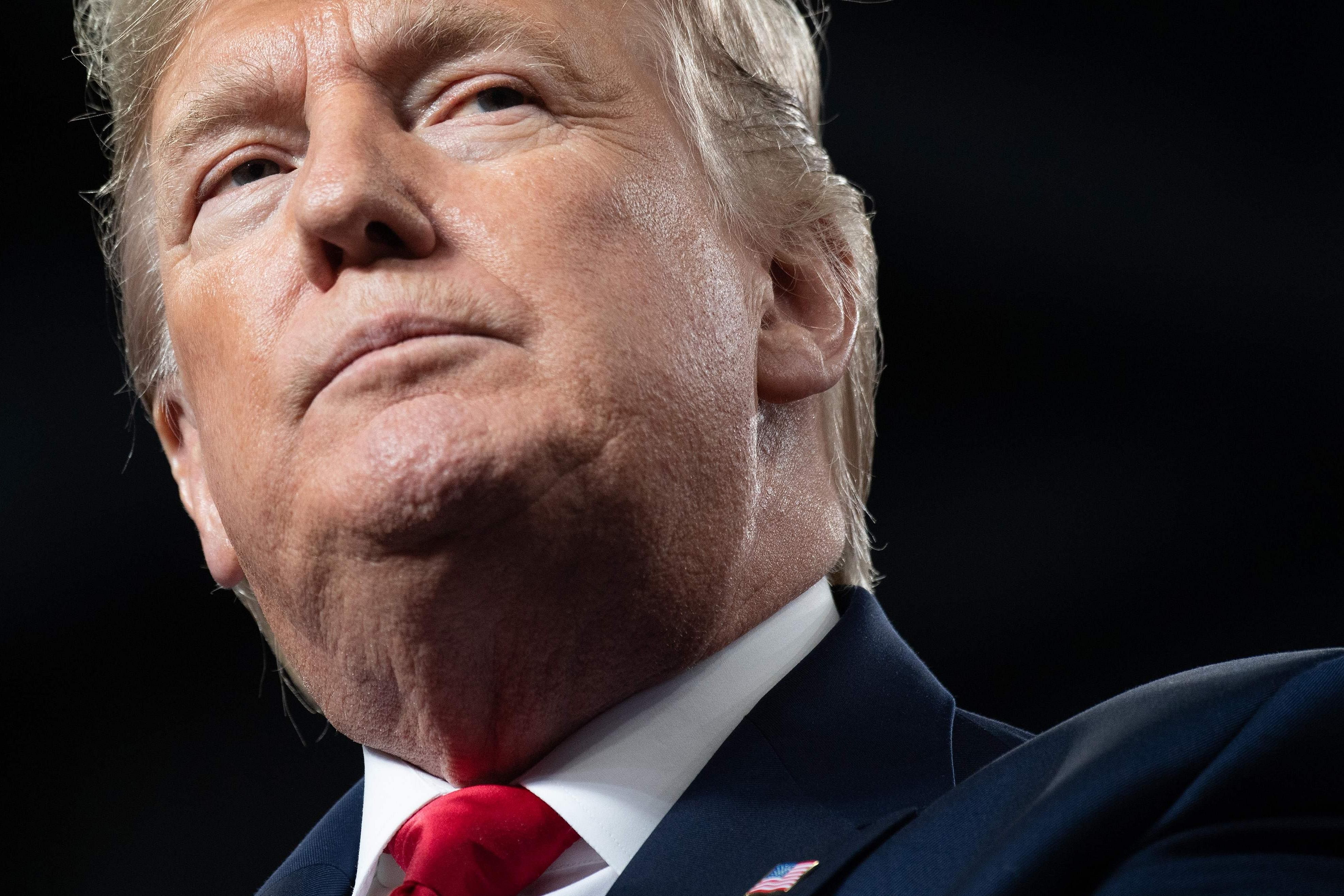
The next morning Trump addressed the nation from the White House, and while he excoriated Iran's "campaign of terror," he made clear he would not retaliate further.
"Iran appears to be standing down," he said, without revealing the secret message sent through the Swiss, adding that he was "ready to embrace peace with all who seek it."
The immediate crisis over, Trump sent top officials to brief Congress, but the closed-door sessions in a secure facility where lawmakers had to surrender their telephones did little to quell concerns about the justification for the drone strike.
In the House briefing, Pompeo offered a brief introduction, followed by presentations by Haspel, Esper, Milley and Joseph Maguire, acting director of national intelligence. All three offered vague but emphatic assertions of intelligence indicating an imminent threat by Soleimani. Milley said the evidence could not be clearer and was the "best intelligence" he had seen during his career.
But they refused to describe it in detail. One lawmaker said the information was no more secret than what could be found on Wikipedia. At one point, Milley said the intelligence showed discussion by Soleimani of potential terrorist attacks on three specific dates in late December or early January.
"What were the threats?" several lawmakers in the audience shouted, but Milley declined to say.
Another lawmaker noted that the three dates Milley cited were all before the strike on Soleimani, and no attacks actually occurred then.
"What really came across was a sense of disdain and contempt for the legislative branch," said Democratic Representative Gerald Connolly of Virginia. "They didn't even pretend to be engaged in information sharing and consultation."
Republican Senator Mike Lee of Utah, called the session for senators "probably the worst briefing" in his nine years in office. "We never got to the details," he said. "Every time we got close, they said, 'Well, we can't discuss that here because it's sensitive.'"
If it was too sensitive for Congress, it was not too sensitive for Laura Ingraham, the Fox News host. In an interview broadcast on Friday, Trump told her that the threat had been to four US embassies, even as other officials said privately that they did not have concrete evidence of Soleimani's targets.
After seven days of sabre rattling and fresh deployments, the immediate march to war had ended. But inside the security establishment, few consider the crisis to be over. In the months to come, they expect Iran to regroup and find ways to strike back.
"Soleimani as a person inspired the masses. He was a national icon. He symbolised the struggle," said Ali Alfoneh, a senior fellow at the Arab Gulf States Institute in Washington who studies Iran. "But he was also a very small part of a very large organisation.
"Yes, it is decapitated," he added, "but the organisation is not destroyed."
